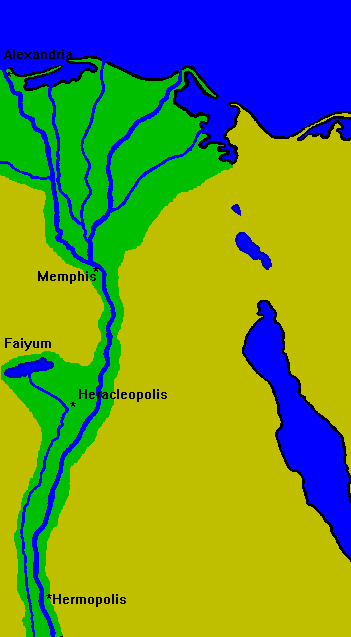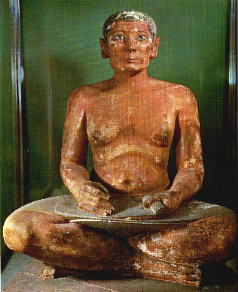


Welcome to the 20th nome of Upper Kemet. I trust your journey has been safe and pleasant so far? My name is Sebekhotep; I'm scribe and servant to Raseneb, the nomarch of the 20th nome. My master has instructed me to be your guide as you travel through our district.
What's that? You say these names sound strange to you? Understandable, if you're not an Egyptian. Kemet is the name we call Egypt in our own language; it means "Black Land," after the fertile soil on the banks of the Nile. A nome is a city-state or province, and we call its governor the nomarch. Sebekhotep means "Sebek is content," Sebek (also spelled Sobek) being the name of the Crocodile-God, who has temples not far from here.

Since we are just 90 kilometers upstream from Memphis, this area marks the beginning of the long valley you call Upper Egypt. However, it also has another name. Many geographers call the 15th through 22nd nomes, in effect everything between Memphis and the ruins of Akhetaten, "Middle Egypt." I'm not sure why; perhaps it is because our valley is so long to begin with. Did you know that it runs for 1,200 kilometers--all the way from Upper Nubia--without any tributaries in it?
One feature which makes Middle Egypt unique is a canal called the Bahr Yusef. It begins in the 15th nome, and follows the Nile all the way to here, paralleling the great river's western bank. After passing Heracleopolis, it turns west and enters a valley known as the Faiyum, the site of our country's largest oasis.
The Bahr Yusef is artificial. We dug it in the XIIth dynasty to irrigate the Faiyum, by creating a lake in the middle of it. I will venture to say that this is an accomplishment equal with the the building of the pyramids, for while robbers have violated so many of the god-kings' final resting places, the Faiyum still provides food and labor for thousands of people today.
